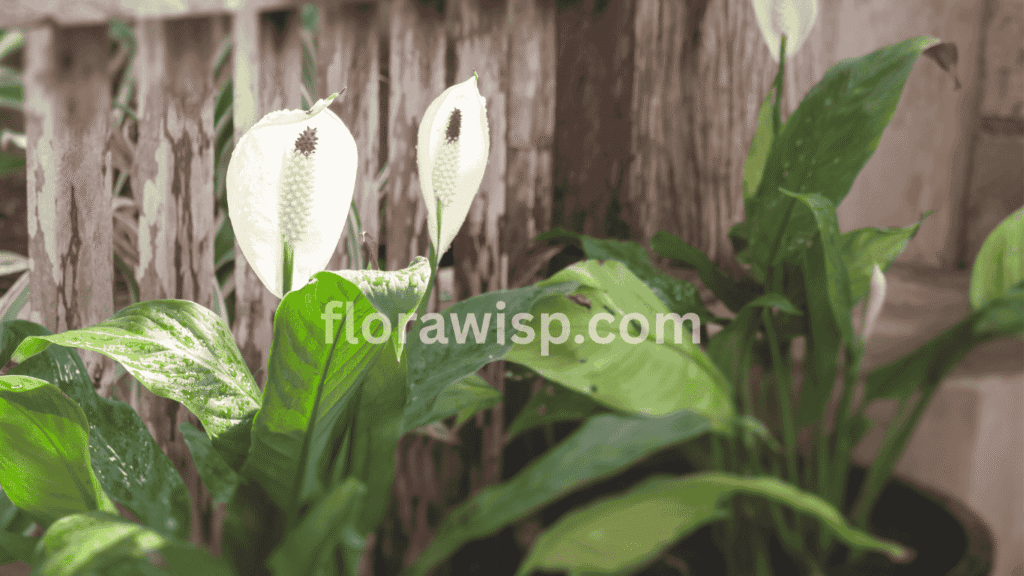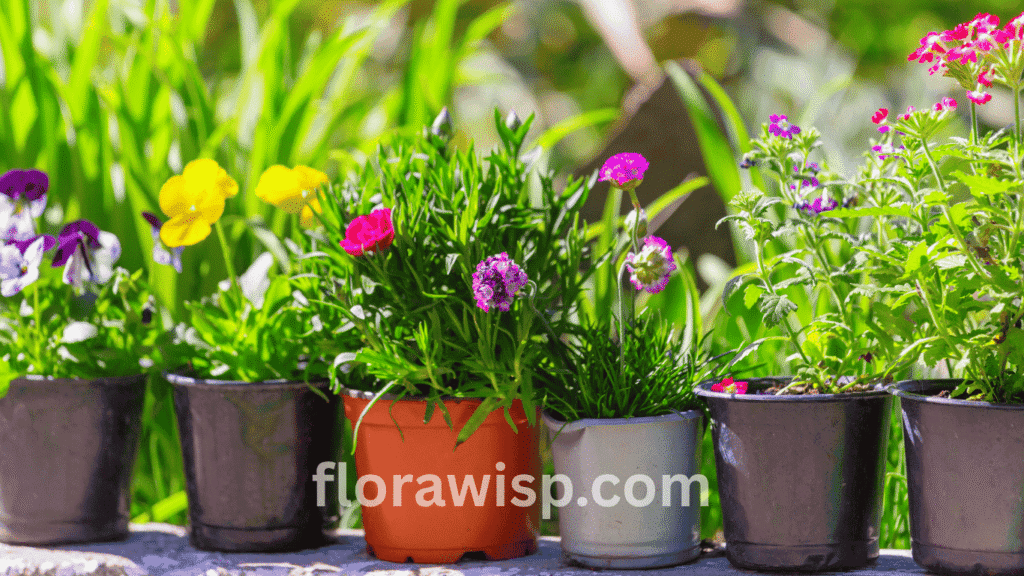The peace lily flower (Spathiphyllum) is a popular tropical houseplant prized for its white hood-like flowers and deep green leaves. Indoors, it typically grows between 1 to 4 feet tall, depending on the variety, pot size, and growing conditions. Peace lily flowers can appear multiple times a year when the plant receives proper light and nutrients. For best results, place it in bright, indirect sunlight and keep the soil consistently moist but not soggy. Avoid using cold or chlorinated tap water, which can cause leaf tips to turn brown.
Drooping is often a sign of overwatering or dehydration both easily fixed by adjusting your watering routine. A peace lily turning brown may indicate low humidity, excessive light, salt buildup, or inconsistent moisture. To promote strong growth and regular blooming, use a balanced 10-10-10 or 20-20-20 liquid fertilizer once a month during spring and summer. Avoid over-fertilizing, which can scorch the roots and reduce flower production.
Regular care, occasional repotting, and attention to signs of stress help maintain lush foliage and vibrant flowers. Whether you’re troubleshooting leaf issues, encouraging blooms, or selecting the best fertilizer, understanding peace lily care basics ensures your plant remains healthy, attractive, and long-living indoors. If you’re interested in outdoor varieties or seasonal blooms, learn how to grow and care for Lily Bulbs in your garden.
In This Article
Peace Lily Flower: Favorite for Indoor Gardeners
Over the years, I’ve cared for many houseplants, but the peace lily flower remains one of my most dependable and rewarding companions. Whether you’re new to houseplants or already tending a thriving indoor jungle, this elegant bloomer fits effortlessly into any setup. Its deep green leaves and striking white spathes bring calm, order, and quiet beauty to the space qualities every home could use more of.
Not a True Lily, But Every Bit as Lovely
Despite the name, the peace lily flower isn’t technically a true lily. It belongs to the Spathiphyllum genus within the arum family. Yet, its graceful blooms and low-maintenance personality make it just as treasured. I’ve grown them indoors in containers and occasionally placed them outdoors on shaded patios across USDA zones 7–10. No matter where you grow it, this plant adapts beautifully as long as you protect it from direct sun and chilly drafts.
A Symbol of Healing and Simplicity
Many gardeners are drawn to peace lily plants not just for their looks, but for what they represent. In my experience, they’ve always been present during moments of quiet change whether gifted during grief, placed in hospital rooms, or used in mindfulness corners at home. That symbolism pairs with their easy nature: keep the soil evenly moist (never soggy), give them bright indirect light, and wipe the leaves clean every few weeks to help them breathe.
Varieties That Add Personality
Over time, I’ve come to appreciate the diversity within the species. The variegated peace lily offers creamy marbled foliage, while the Japanese peace lily adds a sleek, sculptural look. If you’re after something bolder, the red peace lily variety with its deep pink spathes is a showstopper in any collection. And while not technically a peace lily, the Lily of the Valley is another favorite I love for its graceful blooms and ability to thrive in shade making it a perfect companion in low-light indoor setups or woodland-inspired corners. For a touch of architectural elegance, I often pair them with the bold form of the Calla Lily, which adds height and drama to both indoor and garden displays.
Peace Lily Identification: Varieties & Visual Cues
When it comes to houseplants that blend elegance with ease, few compare to the Peace Lily flower. After years of nurturing different houseplants across U.S. growing zones, I’ve found Peace Lilies (Spathiphyllum spp.) to be among the most forgiving, yet strikingly beautiful plants. Understanding their varieties and key identifiers can help you pick the right one for your space, whether you’re after compact charm or lush, air-purifying foliage. Just like white lilies, peace lilies carry a timeless appeal that fits effortlessly into both traditional and modern interiors.
Classic Peace Lily (Spathiphyllum wallisii)
This is the variety you’ll most commonly find in nurseries. It features dark green leaves and the signature white spathe with a central spadix. From my personal experience, this classic Peace Lily flower variety is perfect for beginners. It thrives in low-light corners and blooms reliably when given moderate moisture and occasional feeding. I’ve placed mine near north-facing windows, and it’s rewarded me with year-round blossoms and cleaner indoor air.
Best for: Offices, bedrooms, and beginner plant parents.
Bonus: Excellent air purifier NASA listed it among top air-cleaning plants.
Variegated Peace Lily: A Visual Standout
If you’re looking to add dimension and brightness to darker interiors, the Variegated Peace Lily is a showstopper. Its leaves feature creamy-white or light green streaks, which reflect more light and create a soft visual appeal. Though it blooms less frequently than its classic counterpart, the foliage alone makes it worthwhile. It does best in filtered light to maintain its unique color patterns.
Best for: Decorative appeal in dim rooms.
Expert Tip: Avoid direct sunlight; it scorches the variegation.
Red Peace Lily Plant: Rare and Rich in Foliage Color

Contrary to its name, the Red Peace Lily plant doesn’t bloom red, but its foliage often carries bronze or reddish undertones. It’s less common in mainstream gardening stores, but I once got one from a specialty grower in Florida. Its bold leaves added dramatic flair to my container garden. Just like others, it prefers indirect light and moist, well-draining soil.
Best for: Unique plant collectors and modern interiors.
Note: Requires consistent humidity to retain leaf vibrancy.
Dwarf & Large Peace Lily Varieties
Depending on your space, you can choose between compact tabletop varieties (10–12 inches tall) or larger Peace Lily flowers that reach 3–4 feet. I often recommend dwarf varieties for apartments and desktops, while the taller types serve as natural room dividers or statement plants in larger rooms.
All Peace Lily varieties share the iconic white spathe and lush foliage, but each brings its own charm. From air purification to aesthetic enhancement, growing a Peace Lily flower adds both beauty and function to your indoor garden. As someone who’s grown them across seasons and settings, I encourage new gardeners to start with one; they’re not just plants; they’re living companions that respond to care with grace.
The Meaning Behind the Peace Lily Flower
The peace lily flower is more than just a beautiful houseplant; it carries profound symbolism that resonates across cultures and emotional landscapes. Its elegant white spathe, rising from glossy green foliage, has long been associated with purity, healing, and renewal. This is one reason it’s a popular plant in both homes and spiritual spaces.
In my years of gardening, I’ve noticed how people often turn to peace lilies during times of emotional transition. I once gave a Japanese peace lily to a neighbor. She told me that its calm presence and soft white blooms brought her a quiet sense of comfort. That moment stayed with me. It reminded me how deeply plants can affect us beyond the physical.
Symbolism Across Life’s Milestones
The peace lily flower is often gifted at funerals or placed in homes as a living tribute. Its clean lines and ability to flourish quietly in low light make it ideal for hospital visits, condolence offerings, or housewarming gifts. In feng shui, it’s believed to absorb negative energy, making it a powerful tool for restoring emotional and spiritual balance in indoor environments.
Beyond mourning, these flowers also represent hope and endurance. I’ve watched my own peace lilies push out new blooms even after being neglected during a busy travel season, a reminder that with the right conditions, they’ll always bounce back. Their persistence mirrors the strength and resilience many of us strive for in our lives.
From Root to Bloom: How Peace Lily Flowers Grow
Understanding the growth cycle of a peace lily flower helps you nurture it with confidence and avoid common pitfalls. While growing them from seed is rare, watching one develop from a healthy rhizome to full bloom is one of the most rewarding indoor gardening experiences I’ve had.
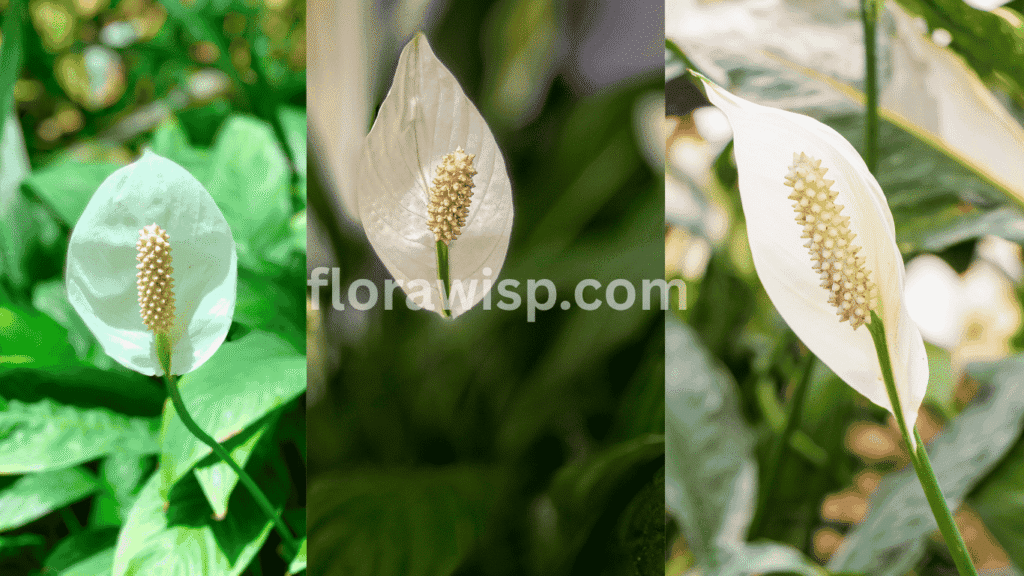
The Growth Journey: From Rhizome to Leaf
Peace lily growth starts underground with rhizomes thick root-like structures that store energy. Under the right conditions bright, indirect light, warm temperatures, and moderate humidity these rhizomes send up deep green leaves and eventually, the spathe and spadix that form the peace lily flower.
One of the largest peace lilies in my collection sits near a south-facing window, and I’ve found that regular watering and monthly feeding with a balanced houseplant fertilizer keeps it thriving. When it’s happy, it produces several flower stalks in a season, each bloom lasting up to six weeks.
Why Your Peace Lily Might Not Be Flowering
Many gardeners ask why their peace lily is not flowering, and in nearly every case, it’s due to insufficient light or poor feeding habits. These plants can tolerate low light, but if you want blooms, you’ll need to provide filtered sunlight and avoid overwatering. I also recommend trimming faded blooms and older leaves to redirect energy to new growth.
Occasionally, peace lily seeds may form after hand-pollination, but they’re rarely viable or used for propagation. Instead, division is the best method. I typically divide my large peace lily plants every 2–3 years, especially when roots begin to crowd the pot. Not only does this encourage better airflow and growth, but it also gives you new plants to share or expand your indoor jungle.
Maximizing Peace Lily Bloom Cycles
Peace lily bloom cycles tend to peak in spring and summer. With consistent care and the right environment, even a small peace lily can surprise you with multiple flushes of flowers throughout the year. Look for deep green leaves and strong stems signs that the plant is storing enough energy to produce new spathes.
In short, whether you’re nurturing a single peace lily on your windowsill or cultivating a collection, understanding its growth rhythm and symbolic value will deepen your connection with this rewarding plant. The peace lily flower continues to be one of my favorite indoor companions for both its serene beauty and its enduring spirit.
Caring for Peace Lily Flower Indoors and Outdoors
After years of growing peace lily flowers both inside and in shaded garden corners, I’ve come to admire just how resilient and adaptable these plants really are. Whether you’re placing them near your living room window or tucking them beneath a tree canopy outdoors, a few consistent care habits can make all the difference.
Indoor Care: Light, Water & Humidity
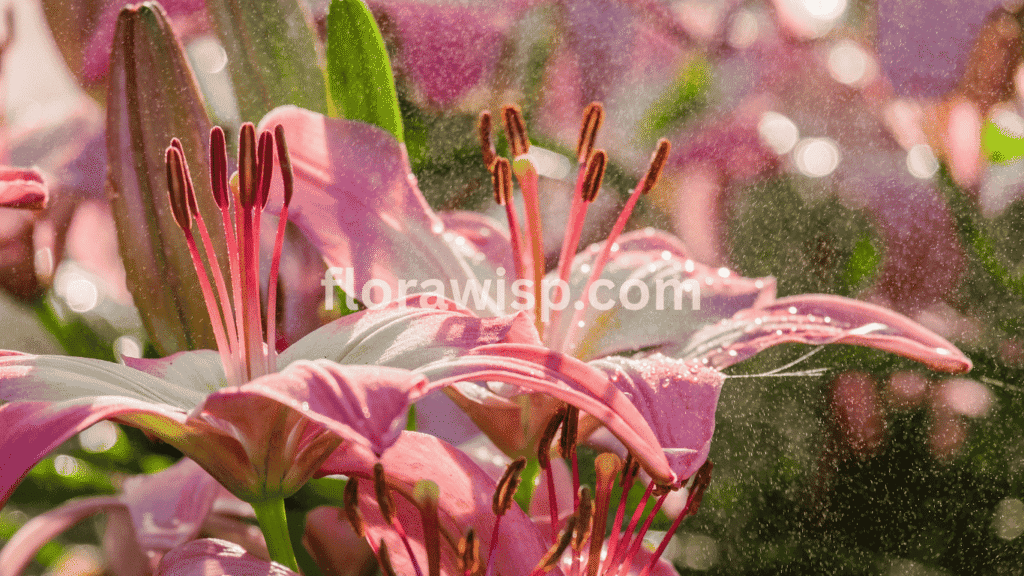
Indoors, peace lily flower care starts with proper lighting. I’ve had the best results placing them in rooms with filtered or medium indirect light north-facing windows or east-facing corners work perfectly. Avoid harsh direct sunlight; it can scorch the broad, glossy leaves.
When it comes to watering, the key is balance. These plants prefer consistently moist soil, but they hate soggy roots. I personally wait until the leaves slightly droop before watering, which is their natural signal. Within hours, they perk up beautifully. In winter, I also mist the leaves occasionally to maintain humidity, especially in dry-heated rooms.
Outdoor Tips for Warmer Zones
If you’re lucky enough to live in USDA zones 10 or 11, you can successfully grow peace lily flowers outdoors. Choose a well-shaded area, like under trees or a covered patio. The outdoor light should be dappled or indirect to mimic their native tropical forest environment. I’ve had success planting them in raised beds enriched with compost and mulch to help retain moisture without waterlogging the soil.
Leaf Cleaning and General Maintenance
Dust tends to settle on peace lily leaves, especially indoors. Wiping them with a damp cloth every few weeks not only keeps them shiny but also improves photosynthesis. In terms of pests, peace lilies are low-maintenance. I’ve rarely faced any serious issues, just the occasional mealybug, which is easy to manage with neem oil spray.
With the right balance of water, light, and attention, your peace lily flower will reward you with elegant white spathes and deep green foliage year-round. They’re among the most rewarding plants for beginners and seasoned growers alike.
Best Soil, Light & Fertilizer for Peace Lily Flower
From trial and error over the years, I’ve discovered that choosing the right soil, light, and fertilizer is the secret to getting vibrant blooms and healthy growth from your peace lily flower.
Ideal Soil Mix: Drainage & Aeration Matter
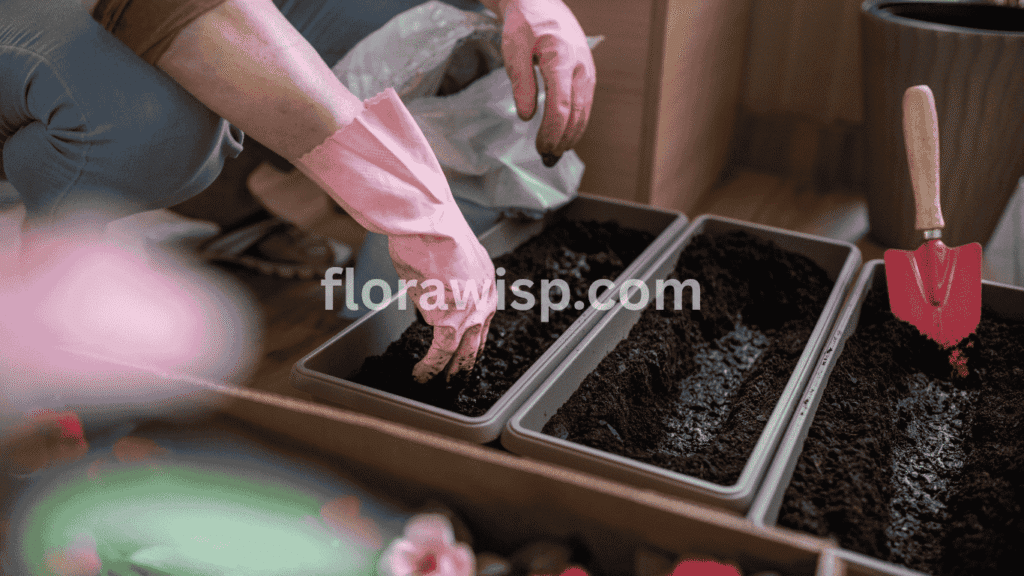
I recommend using a light, aerated potting mix. My go-to blend includes standard potting soil mixed with orchid bark and perlite. This combination improves drainage and allows the roots to breathe, reducing the risk of root rot, a common issue in dense, soggy soils.
Peace lilies love organic matter, so adding a handful of compost or coconut coir goes a long way in replicating their natural growing environment. Whether you’re growing your peace lily flower in a decorative pot or an outdoor bed, this mix ensures the roots stay healthy.
Light Requirements: Indirect and Gentle
Too much sunlight is a mistake I made early on. Direct rays can fade the white blooms and scorch the leaves. Always place your peace lily flower in bright, indirect light, think filtered sunlight through a curtain or a spot a few feet away from a bright window. If natural light is limited, a full-spectrum light for 10–12 hours a day works wonderfully indoors.
Fertilizer Tips: Less Is More
Peace lilies aren’t heavy feeders. I apply a balanced liquid houseplant fertilizer, diluted to half-strength, once a month during the active growing season (spring to early fall). Avoid fertilizing in winter, as the plant goes semi-dormant. Overfeeding is one of the fastest ways to damage the roots and reduce blooming.
For those with busy schedules, slow-release granules are a good alternative to just sprinkle lightly into the soil and let them work gradually. In my experience, a little goes a long way. With steady but gentle feeding, your peace lily flower can double its bloom cycle and thrive with lush growth.
Common Peace Lily Flower Problems
Over the years, I’ve cared for peace lily flowers in varying indoor conditions from humid Florida homes to dry Southern California apartments. One thing I’ve learned: when your peace lily starts showing signs of distress, it’s always communicating something.
Why Are My Peace Lily Leaves Turning Yellow?
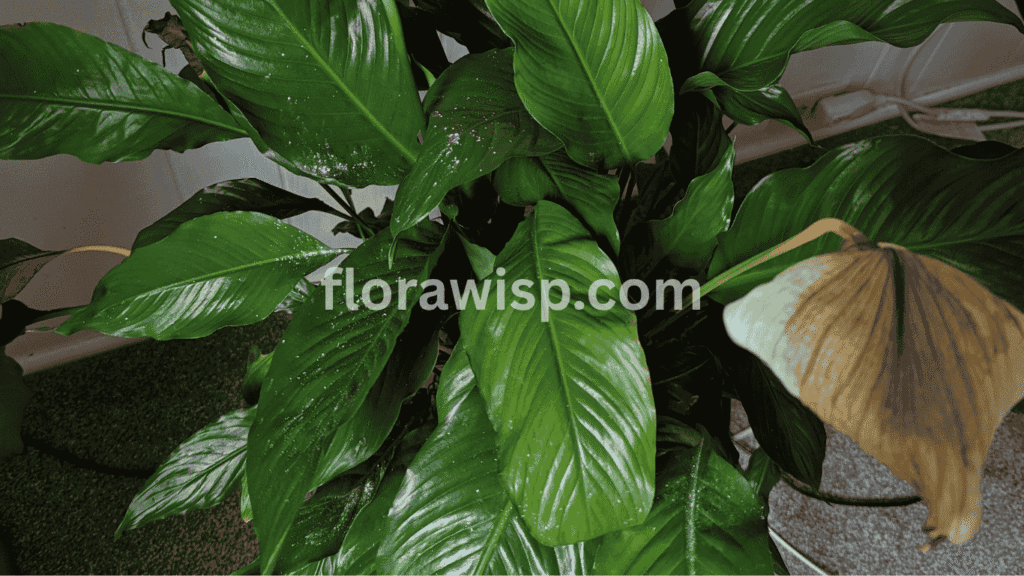
Yellowing leaves are often the first sign of overwatering. Peace lilies prefer moist soil, but not soggy roots. If your peace lily flower is in a pot without proper drainage or if it’s sitting in standing water, the roots can suffocate, leading to yellow leaves. To fix this, allow the top inch of soil to dry before watering again, and make sure your pot has drainage holes.
Brown Tips on Peace Lily Leaves
Brown leaf tips usually point to low humidity or excessive fertilizer. I’ve seen this happen especially during dry winters when indoor heating strips moisture from the air. Mist your peace lily flower regularly or place a humidity tray nearby. If you’re fertilizing monthly, try cutting back to every 6–8 weeks and always dilute the fertilizer to half-strength.
Peace Lily Drooping: Thirsty or in Trouble?
If your peace lily flower is drooping, the cause is often simple dehydration. A thorough watering typically revives it within hours. However, if the drooping persists even after watering, check the roots. Mushy or dark roots may indicate root rot often caused by chronic overwatering. In such cases, repotting into fresh, well-draining soil is your best bet.
Sunburn, Cold Drafts, and Fertilizer Burn
Brown or scorched patches on leaves may signal sunburn often from being placed too close to a sunny window. Peace lily flowers thrive in indirect light. On the flip side, black leaf tips may indicate cold drafts or fertilizer burn. Always water with room-temperature water and avoid overfeeding. If you see blackened tips, trim the affected leaves and reduce feeding frequency.
Keep It Simple, Keep It Consistent
Consistency is key when caring for peace lily flowers. Regular watering, indirect light, moderate humidity, and gentle feeding go a long way. Troubleshooting becomes second nature once you learn to observe the plant’s behavior, something I’ve picked up through years of hands-on care.
How to Propagate and Repot Peace Lily Flowers
Repotting and propagating peace lily flowers is a spring ritual in my gardening calendar. Once the plant becomes root-bound, you’ll notice stunted growth, drooping, or even fewer blooms. That’s when it’s time to divide and refresh.
When and Why to Repot
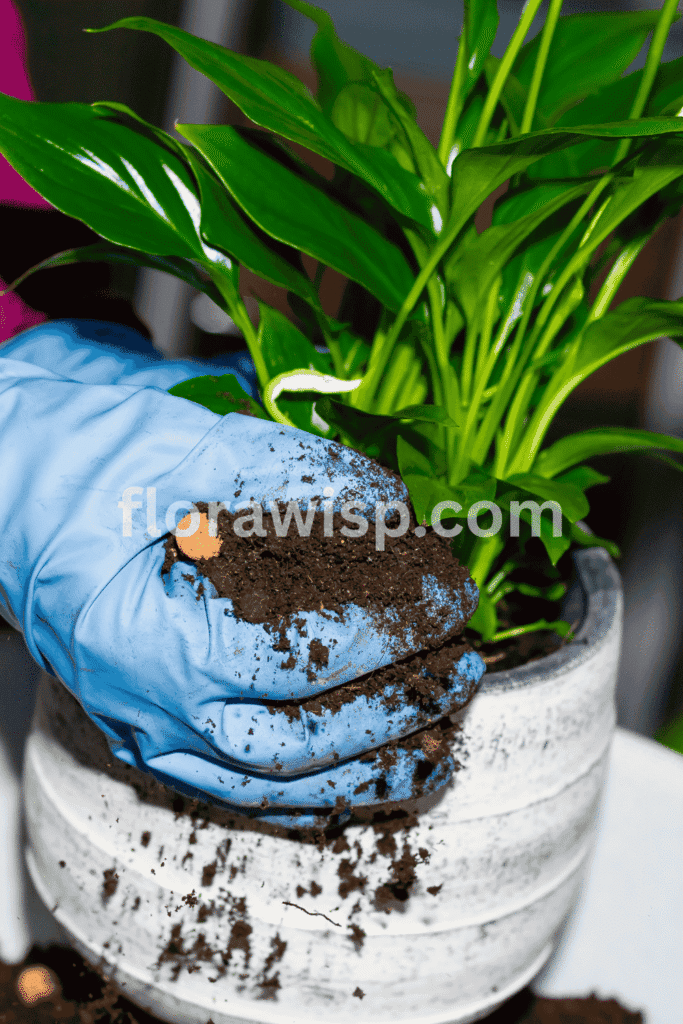
Spring is ideal for repotting because the peace lily flower naturally enters a growth phase. If roots are circling the bottom of the pot or water drains too quickly, it’s a sign the plant has outgrown its container. Repotting helps improve soil quality, root health, and overall bloom production.
Step-by-Step: How I Propagate Peace Lilies by Division
- Remove the plant from its pot – Gently turn the pot sideways and ease out the peace lily without tugging.
- Loosen and divide the roots – Shake off excess soil. Look for natural root clumps and separate them, ensuring each section has at least 2–3 healthy leaves.
- Choose the right pot – Go for a pot just 1–2 inches larger than the previous one. Too big, and moisture will stay trapped, risking root rot.
- Use fresh, aerated soil – I use a mix of peat, pine bark, and perlite. It offers ideal drainage and moisture retention.
- Water thoroughly and place in bright, indirect light – This helps reduce transplant shock.
Outdoor Transplanting? Wait for Warmth
For gardeners planning to transplant peace lily flowers outdoors, wait until nighttime temperatures consistently stay above 60°F. Choose a shady spot where peace lilies scorch easily in direct sun. I’ve had success placing them under large ferns or palms for a lush, layered look.
Aftercare for New Divisions
Don’t panic if your peace lily flower doesn’t bloom right away after propagation. The plant needs time to recover and establish roots. Hold off on feeding for the first month, then resume with a mild liquid fertilizer every 6–8 weeks. Within weeks, you’ll notice new leaves and eventually fresh blooms.
Why Every Home Deserves a Peace Lily Flower
The peace lily flower is more than just a pretty face, it’s a hardworking houseplant that brings both beauty and health into your space. From my years of gardening, few indoor plants have offered the same calm, elegance, and functionality as the peace lily. I’ve placed them in various rooms of my home, especially near my desk and bedroom, and the results speak for themselves cleaner air, better mood, and fewer allergens in the air.
A Natural Air Purifier You Can Count On
The peace lily flower isn’t just decorative, it’s scientifically proven to purify indoor air. According to NASA’s Clean Air Study, peace lilies help remove harmful pollutants like formaldehyde, benzene, and trichloroethylene. That’s a big deal if you live in a city or spend most of your time indoors. I’ve noticed less dust buildup and reduced dry air symptoms after adding a few peace lily plants near electronics and windows.
Emotional Wellness in Bloom
Looking at the white peace lily flower can have a calming effect. The soft blooms and lush green leaves naturally create a peaceful ambiance. I’ve often recommended them to friends recovering from burnout or grief, and many say the plant brings comfort in subtle but powerful ways.
Best Peace Lily Varieties for Different Needs
- Large Peace Lily (Spathiphyllum Sensation): Perfect for living rooms or entryways where you want a bold, leafy presence.
- Variegated Peace Lily: Offers beautiful leaf patterns and a modern touch great for contemporary decor.
- Mini Peace Lily: Ideal for desks, bedside tables, or smaller apartments where space is limited.
Where to Buy Peace Lily Flowers in the U.S.
You can find peace lily flowers for sale at local garden centers, big-box stores like Home Depot, or trusted online nurseries. Many offer peace lily delivery with same-day shipping. If you’re searching “peace lily near me,” check Yelp or Google Maps for highly rated plant shops in your area.
FAQs
Q. How big does the peace lily get?
Peace lilies typically grow 1 to 4 feet tall, but larger varieties like ‘Sensation’ can reach over 5 feet indoors.
In my experience, proper light, consistent watering, and occasional repotting help them thrive and reach their full size. Compact types are great for desktops, while larger varieties like ‘Domino’ fill corners beautifully. Keep in mind, size varies by variety and pot size peace lily flower growth also becomes more pronounced with good humidity and indirect sunlight.
Q. How to revive a peace lily?
Act fast if your peace lily is drooping, water it deeply and trim dead leaves immediately.
I’ve revived many limp peace lilies just by placing them in bright, indirect light and avoiding soggy soil. In most cases, underwatering is the cause, but poor drainage or compacted roots can also stress the plant. Always check for root rot and report if necessary. Regular misting helps too, especially during dry seasons.
Q. Why is my peace lily drooping?
Your peace lily is drooping because it’s likely thirsty dry soil is the most common cause.
From my own experience, a good soak brings it back to life within hours. But if the soil is wet and it’s still drooping, you might be dealing with root rot. Poor drainage and overwatering lead to decay. Use well-draining soil and pots with holes, and let the top inch dry before watering again.
Q. How to care for a peace lily indoors?
Place your peace lily in bright, indirect light and keep the soil consistently moist but not soggy.
As a gardener who’s grown peace lilies for years, I’ve found they love warm, humid spaces like bathrooms or kitchens. Fertilize once a month in spring and summer, and wipe leaves regularly to keep them dust-free for better breathing. Mist during dry months and avoid cold drafts or direct sunlight to prevent stress.
Q. Are peace lilies toxic to cats?
Yes, peace lilies are toxic to cats, chewing on them can lead to drooling, vomiting, and mouth irritation.
In my garden community, we always advise cat owners to keep peace lilies well out of reach. While they’re not as deadly as true lilies, they contain calcium oxalate crystals, which irritate the mouth and digestive tract. If ingested, rinse your cat’s mouth with water and consult your vet immediately.
Q. Are peace lilies toxic to dogs?
Yes, peace lilies are harmful to dogs if ingested, they may vomit, paw at their mouth, or develop swelling.
As a dog owner and indoor plant grower, I’ve seen how curious pups can get. The peace lily flower and leaves contain irritants that trigger discomfort. Place plants on high shelves or behind barriers. If your dog eats any part, seek veterinary help quickly to avoid further complications.
Conclusion
Peace lilies respond best to stable indoor conditions with moderate light, regular watering, and light feeding. Growth is compact to medium, and issues like drooping or browning usually trace back to inconsistent moisture or environmental stress. Selecting the right fertilizer, maintaining humidity, and avoiding harsh light keeps peace lilies healthy and attractive year-round, especially when you’re growing Lilies in a Pot where container conditions require a bit more attention.
References
NASA Clean Air Study on Air‑Purifying Plants
Gardening Know How: Do Peace Lilies Improve Indoor Air Quality?
Pennington Seed: How to Grow and Care for a Peace Lily
Gardener, M.Sc. Horticulture
Elara Bennet is a gardening writer from Austin, TX, passionate about sustainable lawns and blooms. Read full bio →

